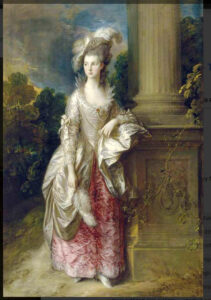
Compliments of the Season!
As mentioned in my last post, Ford Street Publishing is producing a fantasy anthology in March 2024, and my story “The Churchyard Yarrow” is included. The book’s title is “Borderlands: Tales from the Edge — a new anthology.”
Let me tell you something about the background of my short story. It’s an excerpt from a work I’ve recently finished writing. The novel’s title is THE KING’S SHILLING, and it is Book #1 in a new trilogy called MADIGAN’S LEAP.
I began this work some while ago, and it was originally intended to be a short story.
I set it aside for what I thought was a year or two, but when I eventually looked at it again this year, my word processing software informed me that I had typed the first word in 2008. Even back then, the short story was taking on larger dimensions, because I had got as far as the middle of what is now Book #2 before setting it aside.
I recommenced the project, accepted the inevitable reality that it was expanding into three volumes, and completed the trilogy.
Yarrow

Achillea millefolium is commonly known as yarrow. Other common names include old man’s pepper, devil’s nettle, sanguinary, milfoil, soldier’s woundwort, and thousand seal.
You know that when a plant has many common names, it’s one that people find useful.
From Wikipedia: “In antiquity, the plant was known as herba militaris for its use in stanching the flow of blood from wounds. Other names implying its historical use in healing—particularly in the military—include bloodwort, knight’s milfoil, staunchweed, and, from its use in the United States Civil War, soldier’s woundwort.” [Wikipedia: Achillea millefolium]
It’s the “magical” uses of plants that also interests me. Historically, in Ireland, on May Day or the night before, women would place a stocking full of yarrow under their pillow before they went to sleep and recite:
Good morrow, good yarrow, good morrow to thee,
I hope by the yarrow my lover to see;
And that he may be married to me.
The colour of his hair and the clothes he does wear,
And if he be for me may his face be turned to me,
And if he be not, dark and surely may he be,
And his back be turned toward me.[Britten, James (1878). Folk-Lore Record. Vol. 1. Folklore Enterprises, Ltd., Taylor & Francis.]

